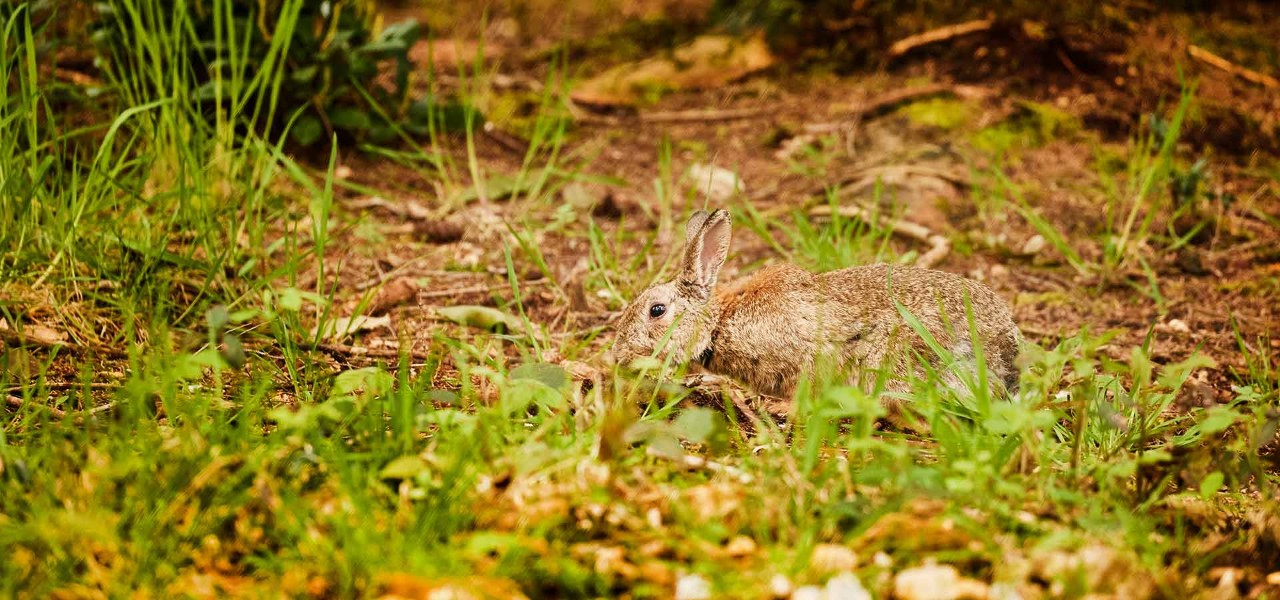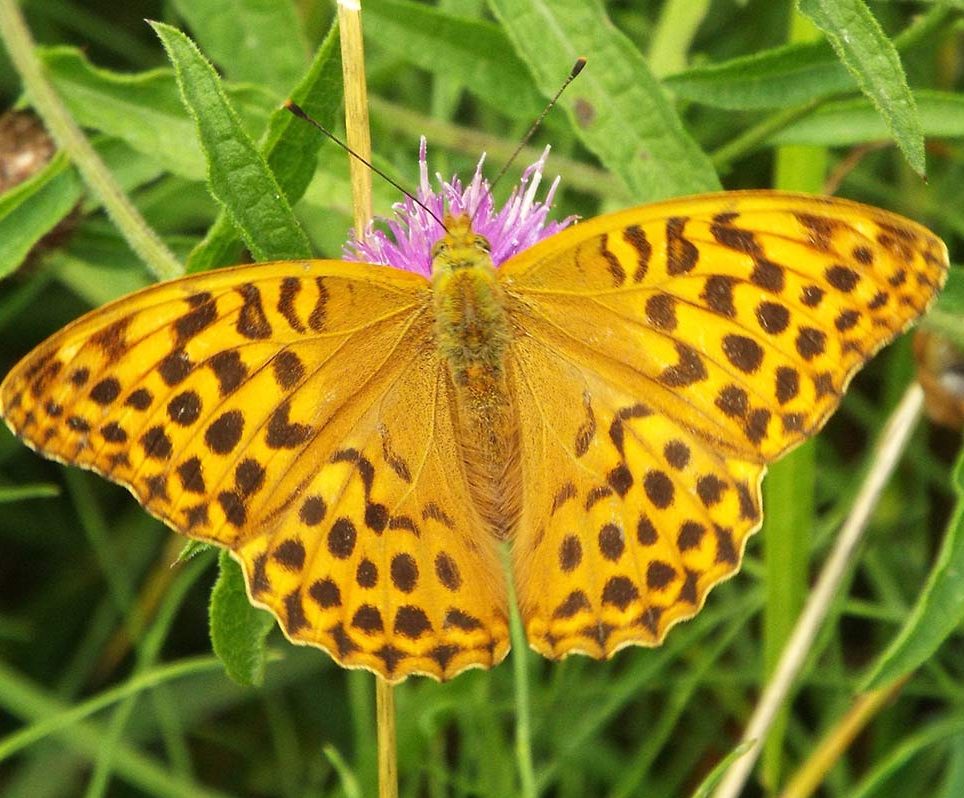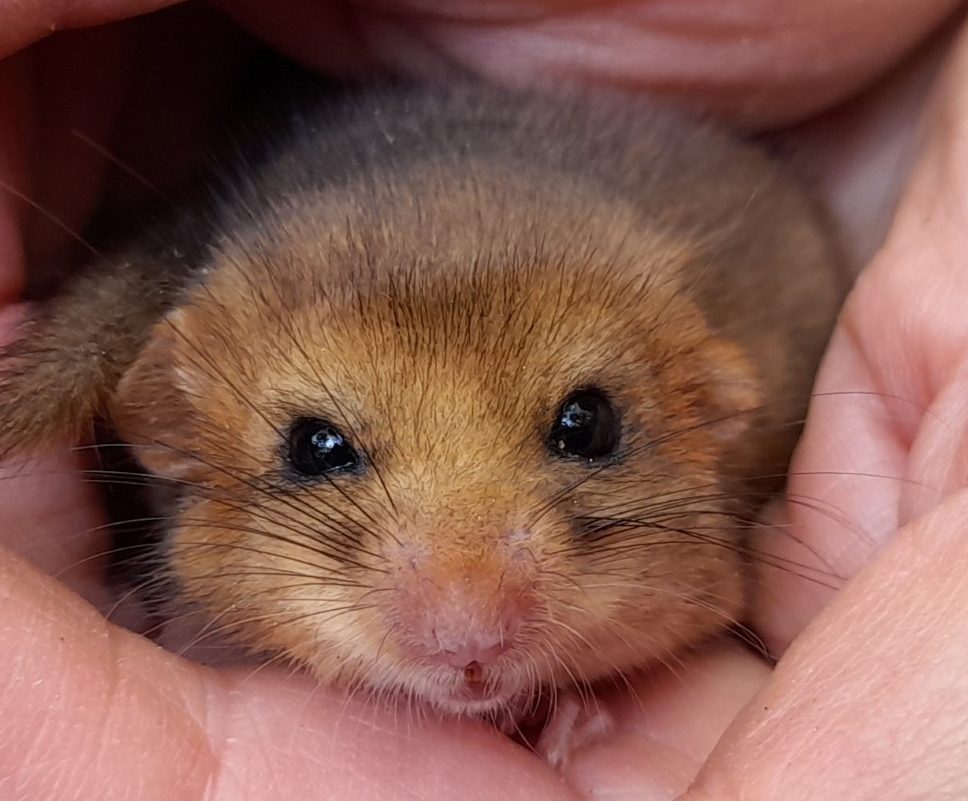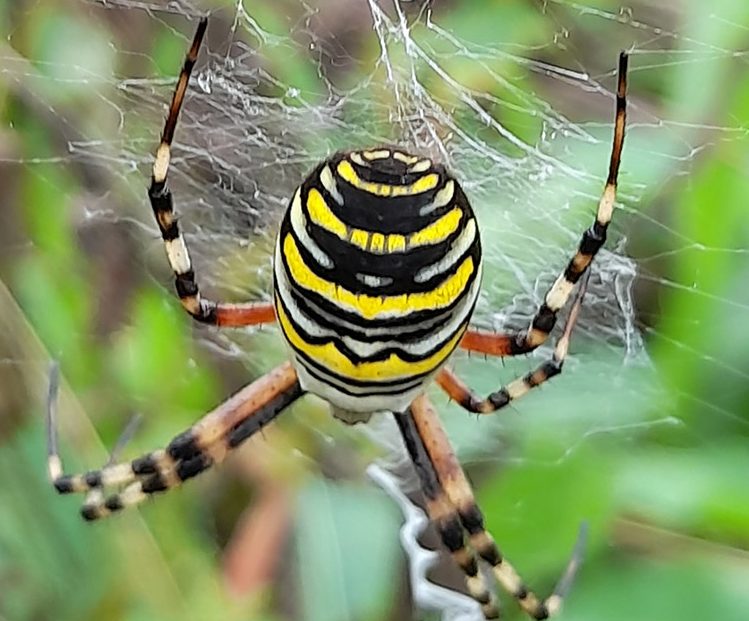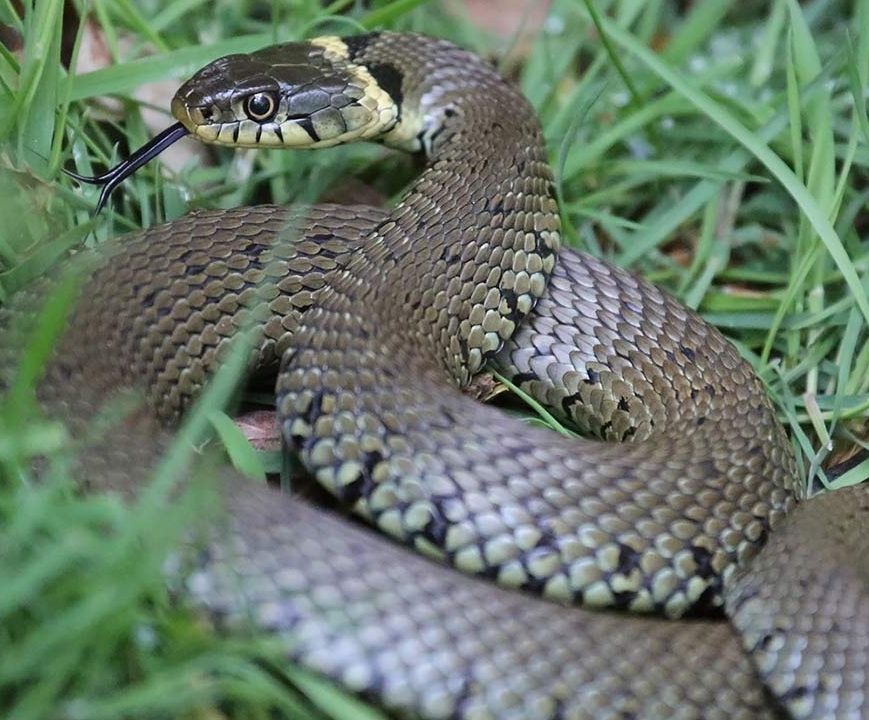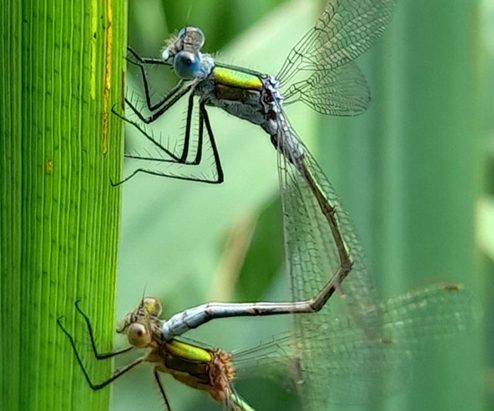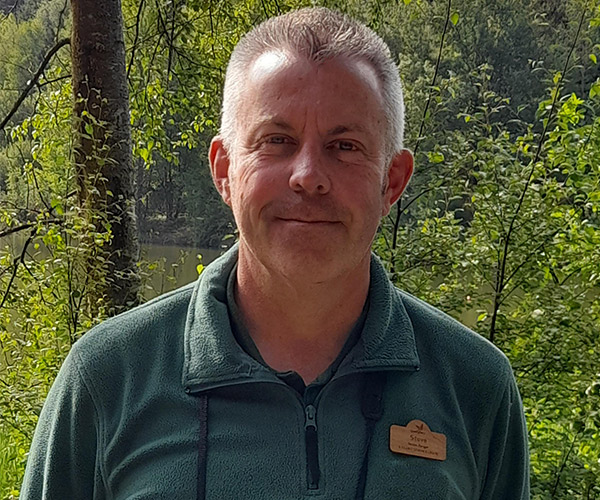Silver-washed fritillary
The first feature of our summer wildlife highlights is silver-washed fritillary. These large orange and brown butterflies are unmistakable and can be seen all around the village during the summer months. They are powerful and fast fliers who often ascend high into the trees. The females lay their eggs on tree trunks and, after hatching, the caterpillars crawl down the trunk to feed on violets.
Top tip!
Look for the striking adults nectaring on bramble flowers in early summer or buddleia later in the season. They are often easily approachable when feeding and, with a little patience, you should be able to take a close-up photograph.

